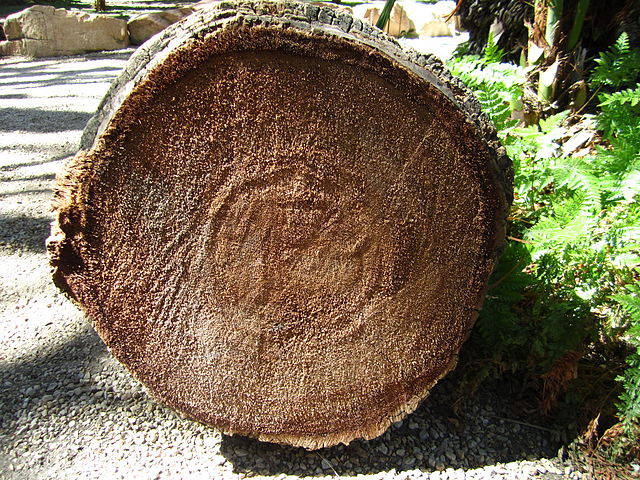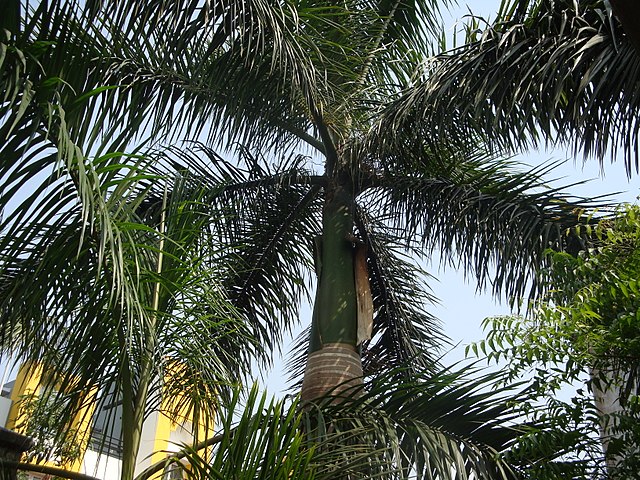Roystonea regia, commonly known as the royal palm, Cuban royal palm, or Florida royal palm, is a species of palm native to Mexico, the Caribbean, Florida, and parts of Central America. A large and attractive palm, it has been planted throughout the tropics and subtropics as an ornamental tree. Although it is sometimes called R. elata, the conserved name R. regia is now the correct name for the species. The royal palm reaches heights from 15–24 m (50–80 ft) tall. Populations in Cuba and Florida were long seen as separate species, but are now considered a single species.
Roystonea regia
Crown with immature and mature fruit
The distinctive smooth crownshaft and rows of circular leaf scars are clearly visible.
Avenue in Mysore, India
The Arecaceae is a family of perennial, flowering plants in the monocot order Arecales. Their growth form can be climbers, shrubs, tree-like and stemless plants, all commonly known as palms. Those having a tree-like form are called palm trees. Currently, 181 genera with around 2,600 species are known, most of which are restricted to tropical and subtropical climates. Most palms are distinguished by their large, compound, evergreen leaves, known as fronds, arranged at the top of an unbranched stem, except for the Hyphaene genus, who has branched palms. However, palms exhibit an enormous diversity in physical characteristics and inhabit nearly every type of habitat within their range, from rainforests to deserts.
Arecaceae
Sawn palm stem: Palms do not form annual tree rings.
This grove of the native species Washingtonia filifera in Palm Canyon, just south of Palm Springs, California, is growing alongside a stream running through the desert.
Two Roystonea regia specimens. The characteristic crownshaft and apex shoot, or 'spear', are visible.








